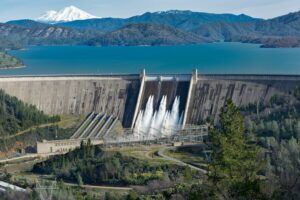Hydropower: Sustaining the Flow of Energy and Ecosystems

With a history spanning over a century, hydropower has evolved from a pioneering energy source to a linchpin in the pursuit of renewable and sustainable energy solutions. In this exploration of hydropower, we delve into its multifaceted role, encompassing clean energy generation, environmental preservation, and its capacity to adapt to the challenges of a rapidly changing energy landscape.
At its core, hydropower encapsulates a delicate balancing act between power generation and the preservation of natural ecosystems. While hailed for its capacity to provide clean and low-cost electricity, constructing dams, a cornerstone of hydropower, raises critical environmental concerns. The displacement of communities, alteration of river systems, and impacts on aquatic life underscore the complexity of harnessing the kinetic energy of flowing water.
Addressing the environmental challenges associated with hydropower is imperative for its long-term sustainability. Recognizing the need for responsible practices, the industry has embraced innovative solutions to mitigate adverse effects. Fish-friendly turbine designs, fish ladders, and downstream fish bypass systems exemplify advancements aimed at safeguarding aquatic biodiversity. Environmental impact assessments and rigorous planning have become integral components of hydropower projects, ensuring a holistic approach to energy development.
One facet where hydropower shines is energy storage, mainly through Pumped Storage Hydropower (PSH). Boasting an impressive installed capacity of 21.9 gigawatts (GW), PSH is the most significant contributor to U.S. energy storage, constituting approximately 93% of all commercial storage capacity in the United States. The prowess of PSH lies in its ability to provide flexibility, storage, and various grid services across diverse timescales, creating a synergy with variable solar and wind resources.
Traditionally perceived as a baseload or predictable peaking resource, hydropower has undergone a transformative evolution to meet the demands of a decarbonized power sector. The inherent technical characteristics of hydropower and PSH systems position them as versatile contributors to a spectrum of grid services. From rapid-response storage to inertia, these capabilities empower the seamless integration of variable renewables, offering a dynamic solution to the evolving needs of the grid.
Hydropower emerges as a powerhouse of clean energy and a symbol of coexistence with nature. As the world strives for a 100% clean energy future, the challenges posed by environmental impacts are met head-on with ongoing innovations and a commitment to responsible energy practices. The journey of hydropower represents a harmonious blend of power generation and environmental preservation, showcasing the potential for sustainable energy solutions that sustain both the flow of electricity and the delicate ecosystems surrounding us. In navigating this intricate nexus of energy and ecology, hydropower stands as a beacon of possibility, guiding the way to a resilient and regenerative energy future.